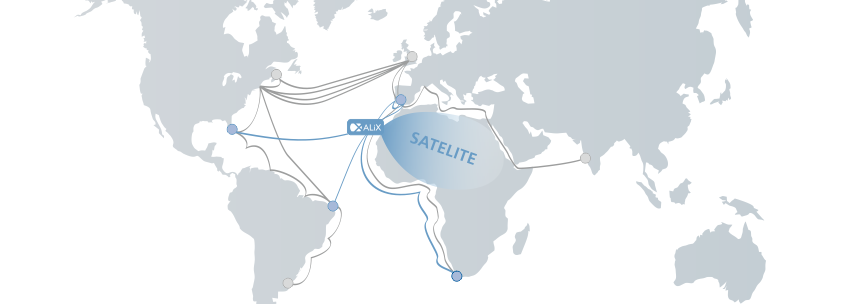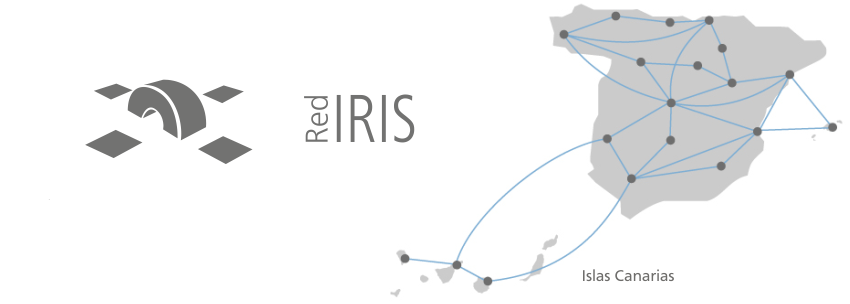Sandy bridge Platforms
The computing core of the infrastructure is formed by 1028 nodes with Intel Sandy Bridge processors:
- Two Intel Xeon E5-2670 processors with 8 cores / 16 T @ 2,60 GHz 16 MB
- 32 GB RAM DDR-3 1600
- 500GB HDD
- Advanced remote management
- 2 Gigabit ethernet ports
- 1 IB QDR enhanced port
Plataformas Ivy bridge
72 Ivy Bridge processor technology are also available:
- Two Intel Xeon E5-2670v2 with 10 cores / 20 T @ 2,60 GHz 16 MB
- 32 GB RAM DDR-3 1600
- 500GB HDD
- Advanced remote management
- 2 Gigabit ethernet ports
- 1 IB QDR enhanced port
Fat nodes
There is a fat node platform formed by three FUJITSU PRIMERGY RX500 servers with the following hardware setup:
- Four Intel Xeon E5-4620 processors with 8 cores / 16 T @ 2,20 GHz 16 MB
- 256 GB RAM DDR-3 1600
- 2 300GB HDD in RAID 1
- Advanced remote management
- 4 Gigabit ethernet ports
- 1 IB QDR enhanced port
Storage
The storage solution is based on NetApp technology and fulfills a dual purpose, on the one hand meet all technical requirements for supercomputing solution and secondly ensure high degree of flexibility. The main features of this system are:
- 1.5PB net
- The storage array is configured in cluster mode having all the redundant elements to deal with potential hardware failure.
- Two types of disk
- SAS : The fast disks are configured using 24 expansion trays SAS interface drives with 450GB drives and working at 15KRPM.
- SATA: Slow disks are configured using 24 expansion trays SAS interface drives with 3TB disks working at 7.5KRPM.
- To improve the overall performance of read operations on SATA disks, the system has 512GB FlashCache memory per node, which perform the automatic caching of the most accessed data blocks.
- It is considered the RAID-DPTM (double parity) use for all RAID groups. RAID groups are grouped into “Aggregates” stripping the information to optimize the performance and safety. Each RAID-DP group is sized to reach a configuration with 14 data disks and 2 parity.
- There are a set of global spare disks according to best practices.
Networking
Teide-HPC networking solution relays on a four networks topology, each one with a specific purpuose. Three networks are based on ethernet technology and are used for Out-Of-Band management, on band management and storage access. The fourth network is an Infiniband technology one, used to inter-node communication in parallel processing.
Management Network
Storage network
Low-latency network
Shared for management and OOB
1 GbE
20GbE in aggregation layer for HA
40GbE in the backbone layer for HA
Storage dedicated
1 GbE
20GbE in aggregation layer for HA
40GbE in the backbone layer for HA
Infiniband QDR
40 Gbps bandwidth
Blocking factor 5:1
Connectivity
Two login nodes are provided to give users access to Teide-HPC infrastructure, this nodes allow the use of the scheduling system. There are also two transfer nodes which permit high speed data transfers accesing to the data network backbone.
Teide Supercomputer is conected to internet through the Spanish academic and research network, Rediris, with a 10 Gb link.
Project ALiX
Proyecto Alix (Alix Project) is a Council of Tenerife proposal which has been led by the Instituto Tecnológico y de Energías Renovables (Technological Institute of Renewable Energy), ITER SA Its main objective is to improve the competitiveness of the ICT sector in the Canary Islands, which is conducted through its three pillars:
- D-ALiX. Datacenter ALiX project. Placement services and offers a competitive offer massive external communications.
- Canalink. Responsible for laying and launched a neutral submarine cable system.
- IT3. Responsible for the deployment of a terrestrial fiber optic ring island in Tenerife.

RedIris
RedIRIS is the Spanish academic and research network that provides advanced communication services to the scientific community and national universities. It is funded by the Ministry of Economy and Competitiveness and is included in the Ministry’s map of Special Scientific and Technological Facilities (ICTS). It is managed by the Public Corporate Entity Red.es, which reports to the Ministry of Industry, Energy and Tourism.








